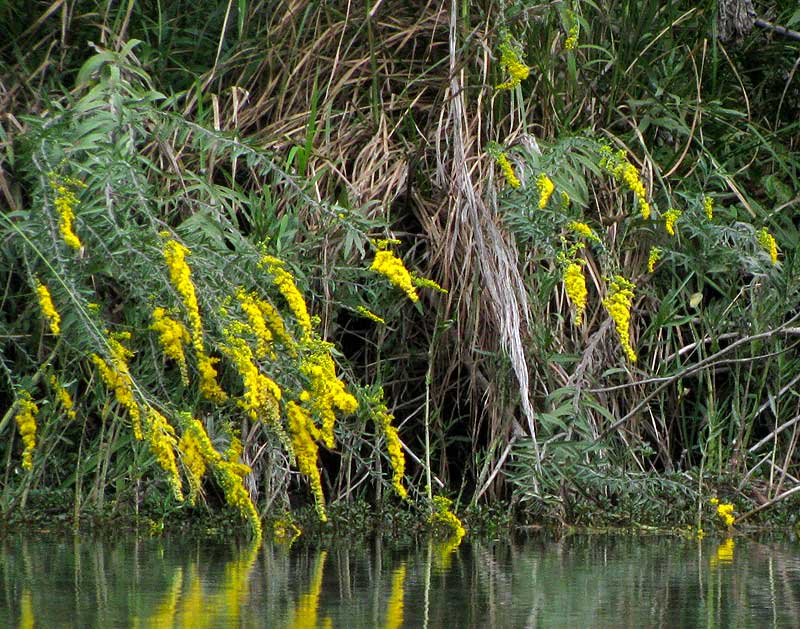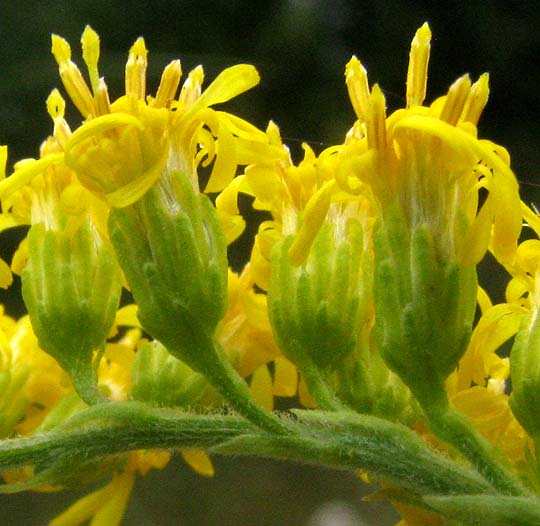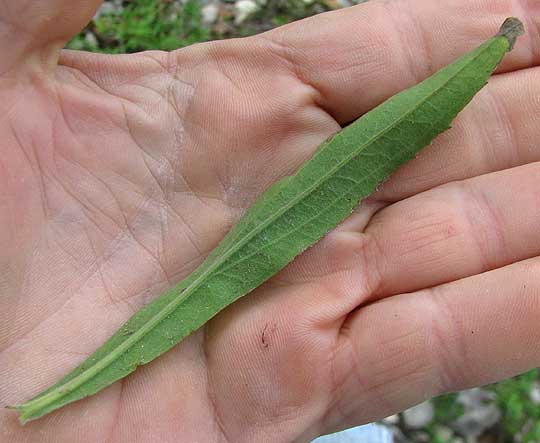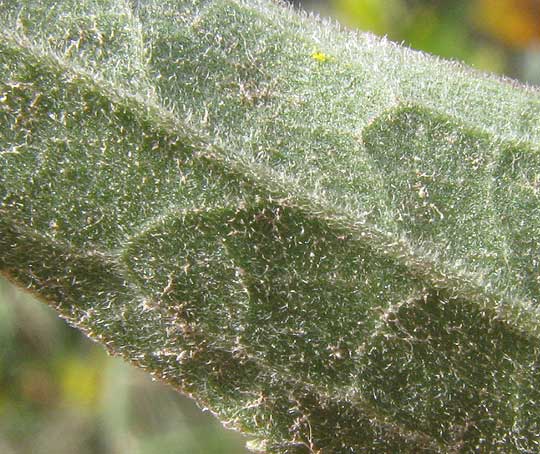Excerpts from Jim Conrad's
Naturalist Newsletter

from the the October 14, 2012 Newsletter issued from the valley of the Dry Frio River in northern Uvalde County, southwestern Texas, on the southern border of the Edwards Plateau; elevation ~1750m (~5750 ft); N29.62°, W99.86°; USA
JULIA'S GOLDENROD
Nowadays throughout much of North America goldenrods are, or recently were, putting on a show with their golden arrays of composite flowers. I'd wondered whether there might be goldenrods here in arid southwestern Texas, so I was tickled during my first walk along the little Dry Frio River behind the cabin to see some. The instant I saw them, however, I figured that there was something special about them. First, they appeared only beside, and sometimes inside, the Dry Frio's waters. Second, their arrays of yellow flowers were particularly long and slender. Otherwise, the plants looked very much like the common and often weedy Tall and Canada Goldenrods back in Kentucky and Mississippi. You can see our riverside goldenrods above.
A close-up of some flower heads shows not only the typical goldenrod appearance but also the stem, or rachis, from which the heads arise. Notice that the rachis is unusually soft-hairy:

A leaf from mid-stem is three-veined like the leaves of Tall and Canada Goldenrods, but its margins are only very slightly toothed, and the blade is very narrow and hairy, as you can see below:

The abundant soft-hairiness is something special, so I photographed a leaf's undersurface, which you can see below:

Fortunately the online Flora of North America -- though it's unfinished and many families are yet to be treated -- does indeed describe all 77 goldenrod species (genus Solidago) occurring in North America. There our streamside plants keyed out to Julia's Goldenrod, SOLIDAGO JULIAE, a species not recognized as an independent species until 1989. Before then it was considered a variety of the common Canada Goldenrod, Solidago canadensis.
Flora of North America describes Julia's Goldenrod as occurring in wet soil along streams and lake edges, grasslands, and oak and oak-pine woods. It's found in arid northern Mexico, and enters Texas in the Trans-Pecos region (far western Texas) and the Edwards Plateau, of which we're at the base.
So, this is a wonderful find, an endemic species adapted for exactly the kind of habitat it's occupying here, and looking exactly as it's supposed to look.